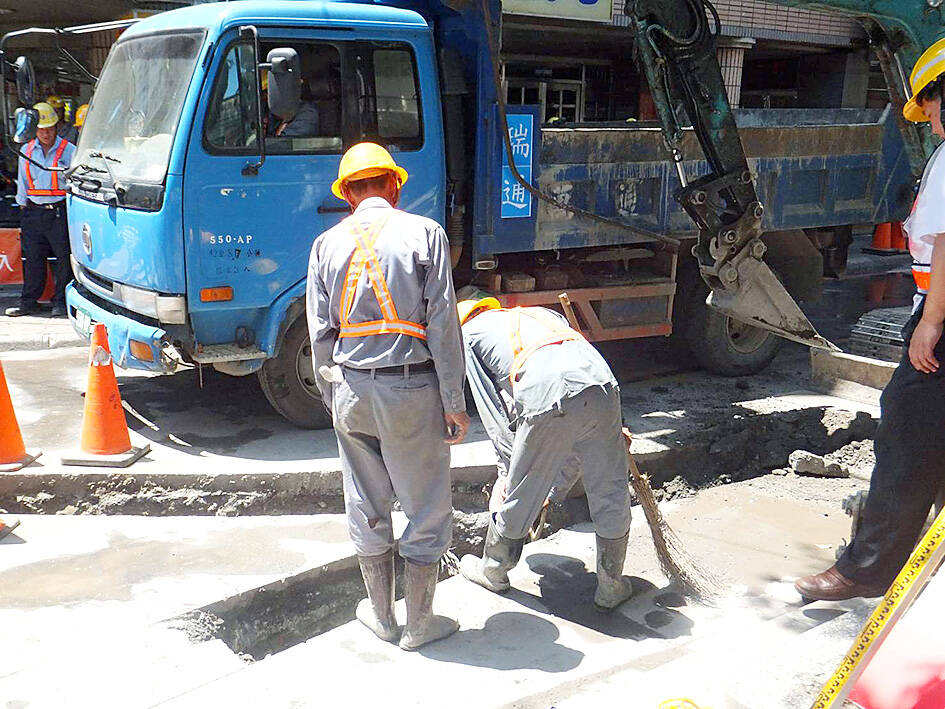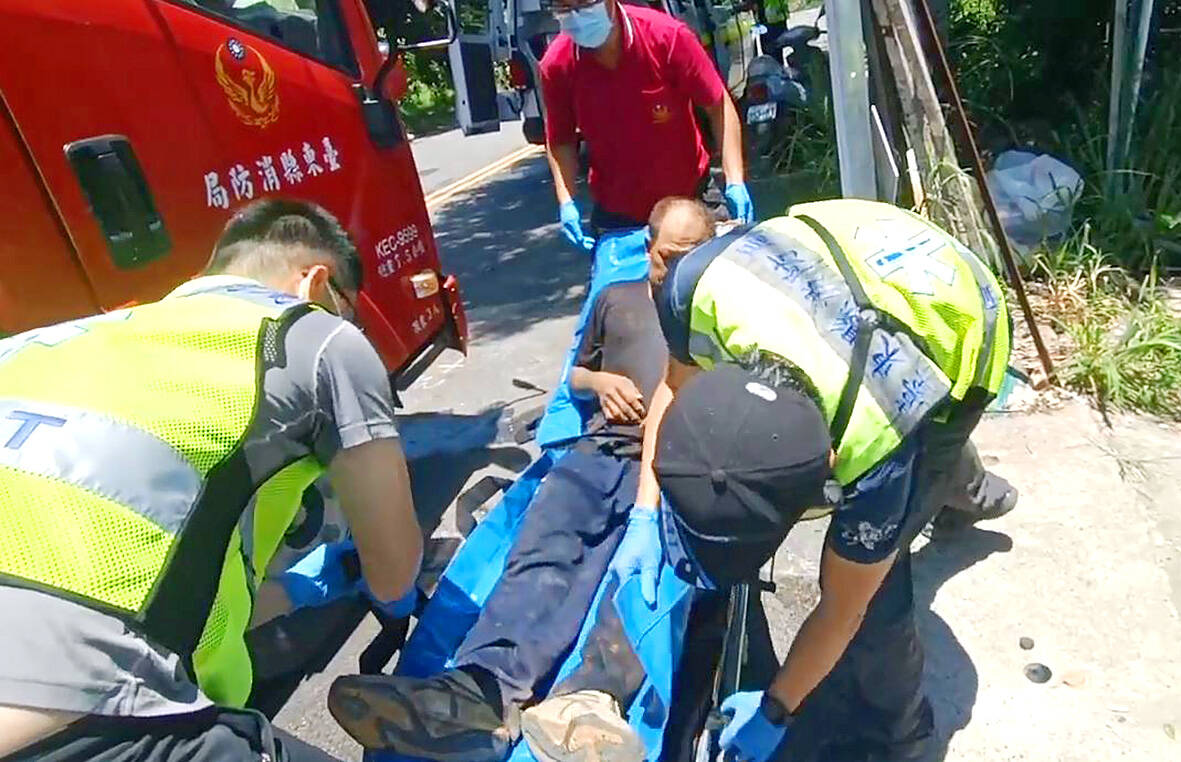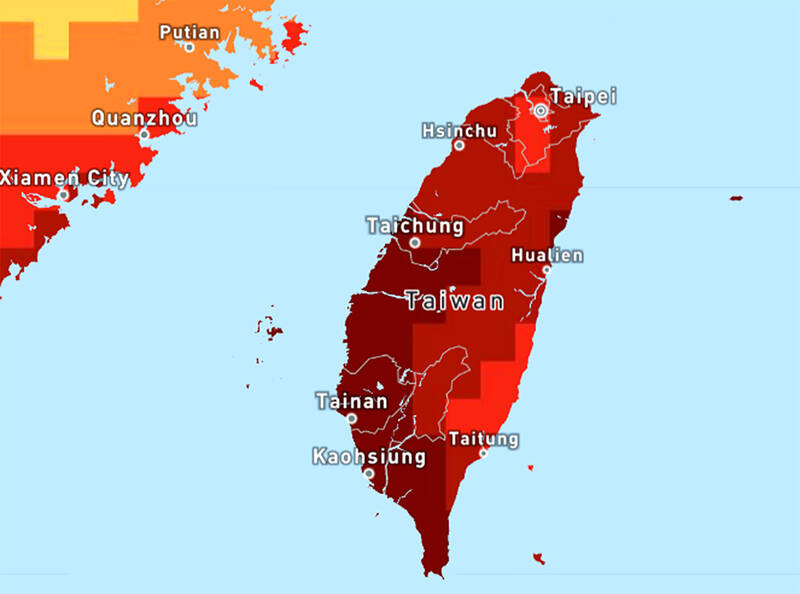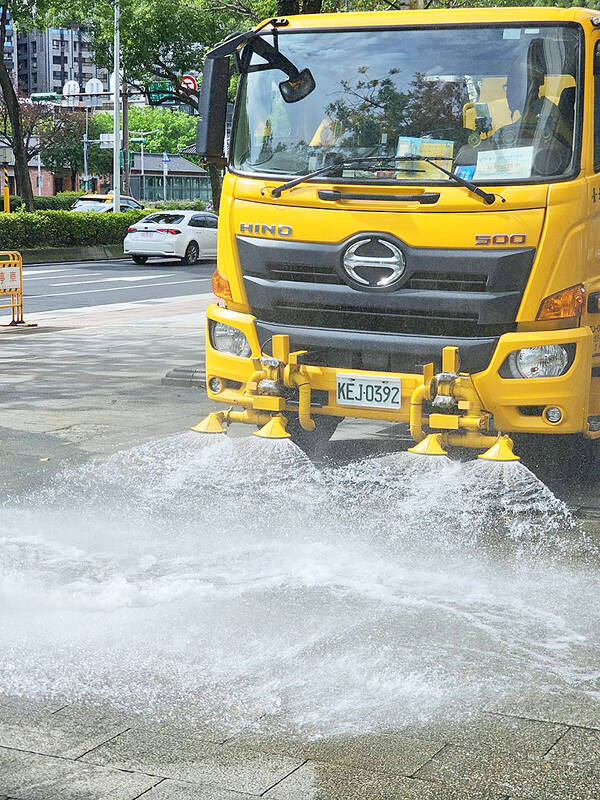Few were surprised when the Central Weather Administration (CWA) confirmed that last month was the hottest October on record. The average temperature was 27.4 degrees Celsius, 2.2 degrees higher than across the reference period of 1991–2020, leading many to ask if the uncomfortable heat was a consequence of anthropogenic climate change.
For nonscientists, getting an answer to that question is now easier than ever before. Climate Central’s Climate Shift Index (CSI) aims to bridge the gap between long-term global trends and the day-to-day weather people experience.
Using attribution analysis “to identify weather conditions that are becoming more common due to human-caused climate change,” the index claims to provide “a locally relevant, daily metric, showing that climate change is not just a future threat but is already part of our daily weather.”

Photo courtesy of Pixabay
The Global CSI includes data for over 1,000 major cities. In Taiwan, it shows results for several minor towns, such as Toufen (頭份) in Miaoli County and Donggang (東港) in Pingtung County, as well as the special municipalities.
Every day, the CSI assigns a value of -5 to +5 to each location. Positive levels (shown by warm colors) indicate that the day’s temperature — be it hot or cold — has become more likely due to human-caused climate change. A CSI of +5 means the current temperature now occurs at least five times more often compared to if there’d been no anthropogenic warming. Negative levels (shades of gray) mean that climate change has made current conditions less common.
For most of last month, Taiwan was a patchwork of reds, implying there’s a direct link between roasting urban environments and mankind’s burning of fossil fuels.

Photo courtesy of the Ministry of Labor
A FAST-WARMING ISLAND
If its methodology is sound, the CSI could be an informative graphic presentation of how the planet is warming, says Candice Shih-chun Lung (龍世俊), deputy director of Academia Sinica’s Research Center for Environmental Changes. Being able to zoom in on overseas locations where she’s collaborating with researchers is especially interesting, she adds.
Historical data leaves Lung in no doubt that, in Taiwan’s urban areas at least, the temperature enhancement over the past 100 to 120 years has been double the global mean.

Photo: Huang Ming-tang, Taipei Times
“Several studies have confirmed this, and the CWA has stated it explicitly,” she says.
Since the start of the 20th century, few countries have developed as rapidly as Taiwan, but Lung explains that this isn’t the only reason why local temperatures have been rising so quickly.
Much of Greater Taipei is contained within a basin that traps anthropogenic heat such as vehicle exhaust, restricts air circulation and exaggerates nighttime temperatures. Several districts in and around the capital show a severe urban heat island effect due to exceptional population and construction densities.

Photo courtesy of CSI
It’s important to bear in mind that urban populations are very often more exposed to heat stress and air pollution than monitoring-station data indicate, Lung says. This is because the CWA adheres to World Meteorological Organization standards when it comes to the design and siting of such stations.
Instruments are sheltered inside louvered, white-painted boxes which shield them from direct heat radiation. As a result, it’s not unusual for the recorded temperature to be 1 or even 1.5 degrees Celsius lower than that experienced by humans nearby, Lung says.
“Because people are close to air pollution sources like traffic emissions, cooking, and incense burning, their exposure is higher than the pollutant levels in the well-mixed ambient air that the Ministry of the Environment (MOENV) monitors,” she says.

Photo: Huang Yi-ching, Taipei Times
Public awareness of the danger posed by extreme heat reached a turning point in 2007. When three elderly farmers, working outdoors in late May, suffered fatal heatstroke, news reports punctured the mood of general complacency. Later that year, Lung was one of the experts the government invited to begin developing an official heat warning system.
Government officials and scholars have been talking about the heat issue for at least 20 years, Lung says. In the past five or six years, “people have noticed the higher temperatures and that the hot season seems to be getting longer and longer. They know we’re really experiencing global warming. Surveys show that few Taiwanese doubt climate change is happening, and most believe it’s manmade.”
SLOW PROGRESS
Article 3 of the Disaster Prevention and Protection Act (災害防救法) designates particular agencies as “central regulating authorities” for various scenarios. When an earthquake occurs, the Ministry of the Interior leads recovery efforts. In the event of landslides, the Ministry of Agriculture (MOA) is in charge. If there’s a radiation leak, the Nuclear Safety Commission coordinates the government’s response.
The statute also assigns responsibility in cases of flooding, shipwrecks and several other types of disaster — but, Lung points out, there’s no specific mention of extreme heat. Because it falls within the category of “other disasters,” no government agency is explicitly required to draw up prevention, response and recovery plans.
Back in 2019, Lung joined an official committee which recommended that government agencies consider heatwaves when preparing their disaster prevention and protection plans. Following a reshuffle of officials, however, implementing that recommendation was deprioritized. In 2023, a committee discussing eventualities for which local governments should prepare failed to include thermal extremes.
In Lung’s opinion, these omissions are startling. Every summer, she points out, millions of people are affected by high temperatures, whereas relatively few are impacted by landslides.
Emphasizing that actual preparation is more important than mere wording, Lung lauds MOENV Minister Peng Chi-ming (彭啟明) for recognizing that extreme heat requires a “whole-of-government” approach.
The MOENV has convened multiple meetings, including with the MOA, the Ministry of Health and Welfare and the Ministry of Labor (MOL) in its efforts to develop coherent plans. Yet official preparation for potentially dangerous heatwaves has been uneven.
According to Lung, Taipei and New Taipei City have drafted sound contingency plans. In both cities, when the CWA predicts exceptional temperatures, the municipal environmental protection bureaus coordinate with the emergency services and other local government units. This ensures that hospitals are ready to treat cases of heatstroke, managers of wet markets take steps so food doesn’t spoil and labor affairs departments warn those who work outdoors.
At the national level, however, “the MOL has been slow to take action,” she says. Taiwan has a law protecting those doing strenuous work in hot workplaces, but those rules were written with furnaces and kilns in mind, not sun exposure, Lung says.
Lamenting the lack of progress, Lung says she’s been waiting more than 10 years for the MOL to collect data and formulate regulations that can effectively minimize the heat strain on those working outdoors.
The MOL Occupational Safety and Health Administration’s “Guidelines for the Prevention of Heat Hazards in High-Temperature Operations,” revised less than six months ago, takes into consideration temperature and relative humidity, but not solar radiation or windspeed.
Heat from the sun increases core and skin temperature much more than air temperature alone might suggest, heightening the risk of heatstroke. The effect of wind is more complex. When the air is cooler than a person’s skin (around 35 degrees Celsius), wind helps evaporate sweat more quickly and increases convective heat loss from the body. But if air temperature exceeds skin temperature, a breeze can be detrimental, as it increases convective heat gain.
Along with air temperature and humidity, air movement and radiant heat — either from the sun or from workplace equipment such as an oven — are the four components of the wet-bulb globe temperature (WBGT) index, an internationally-recognized measure of environmental heat as it affects humans.
Getting the regulations right is only half the battle, of course. Because enforcement has never been Taiwan’s strongest point, the country’s outdoor laborers face increasingly hazardous summers.
Steven Crook, the author or co-author of four books about Taiwan, has been following environmental issues since he arrived in the country in 1991. He drives a hybrid and carries his own chopsticks. The views expressed here are his own.

Most heroes are remembered for the battles they fought. Taiwan’s Black Bat Squadron is remembered for flying into Chinese airspace 838 times between 1953 and 1967, and for the 148 men whose sacrifice bought the intelligence that kept Taiwan secure. Two-thirds of the squadron died carrying out missions most people wouldn’t learn about for another 40 years. The squadron lost 15 aircraft and 148 crew members over those 14 years, making it the deadliest unit in Taiwan’s military history by casualty rate. They flew at night, often at low altitudes, straight into some of the most heavily defended airspace in Asia.

This month the government ordered a one-year block of Xiaohongshu (小紅書) or Rednote, a Chinese social media platform with more than 3 million users in Taiwan. The government pointed to widespread fraud activity on the platform, along with cybersecurity failures. Officials said that they had reached out to the company and asked it to change. However, they received no response. The pro-China parties, the Chinese Nationalist Party (KMT) and Taiwan People’s Party (TPP), immediately swung into action, denouncing the ban as an attack on free speech. This “free speech” claim was then echoed by the People’s Republic of China (PRC),

Many people in Taiwan first learned about universal basic income (UBI) — the idea that the government should provide regular, no-strings-attached payments to each citizen — in 2019. While seeking the Democratic nomination for the 2020 US presidential election, Andrew Yang, a politician of Taiwanese descent, said that, if elected, he’d institute a UBI of US$1,000 per month to “get the economic boot off of people’s throats, allowing them to lift their heads up, breathe, and get excited for the future.” His campaign petered out, but the concept of UBI hasn’t gone away. Throughout the industrialized world, there are fears that

Like much in the world today, theater has experienced major disruptions over the six years since COVID-19. The pandemic, the war in Ukraine and social media have created a new normal of geopolitical and information uncertainty, and the performing arts are not immune to these effects. “Ten years ago people wanted to come to the theater to engage with important issues, but now the Internet allows them to engage with those issues powerfully and immediately,” said Faith Tan, programming director of the Esplanade in Singapore, speaking last week in Japan. “One reaction to unpredictability has been a renewed emphasis on